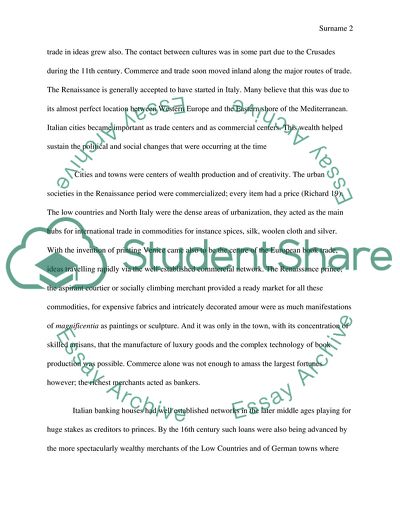Cite this document
(The Origins of Renaissance Art Case Study Example | Topics and Well Written Essays - 1250 words, n.d.)
The Origins of Renaissance Art Case Study Example | Topics and Well Written Essays - 1250 words. https://studentshare.org/culture/1851429-select-an-historical-or-contemporary-moment-and-re-mediate-it-in-a-creative-non-fiction-essay
The Origins of Renaissance Art Case Study Example | Topics and Well Written Essays - 1250 words. https://studentshare.org/culture/1851429-select-an-historical-or-contemporary-moment-and-re-mediate-it-in-a-creative-non-fiction-essay
(The Origins of Renaissance Art Case Study Example | Topics and Well Written Essays - 1250 Words)
The Origins of Renaissance Art Case Study Example | Topics and Well Written Essays - 1250 Words. https://studentshare.org/culture/1851429-select-an-historical-or-contemporary-moment-and-re-mediate-it-in-a-creative-non-fiction-essay.
The Origins of Renaissance Art Case Study Example | Topics and Well Written Essays - 1250 Words. https://studentshare.org/culture/1851429-select-an-historical-or-contemporary-moment-and-re-mediate-it-in-a-creative-non-fiction-essay.
“The Origins of Renaissance Art Case Study Example | Topics and Well Written Essays - 1250 Words”. https://studentshare.org/culture/1851429-select-an-historical-or-contemporary-moment-and-re-mediate-it-in-a-creative-non-fiction-essay.


